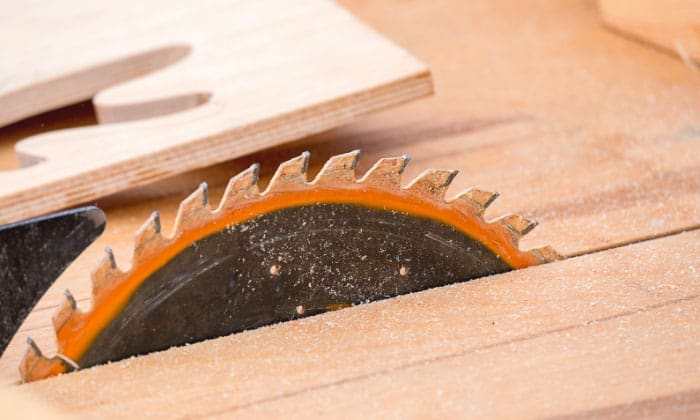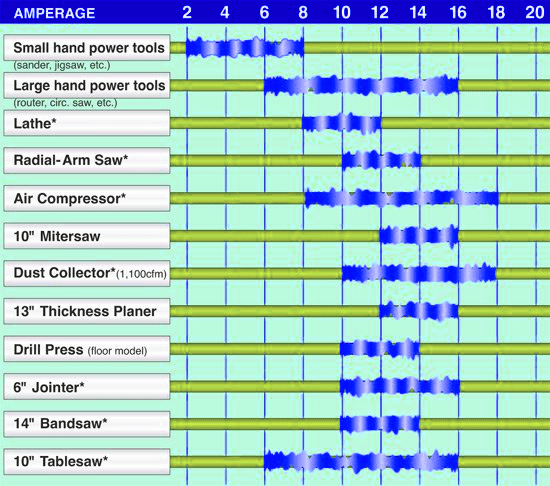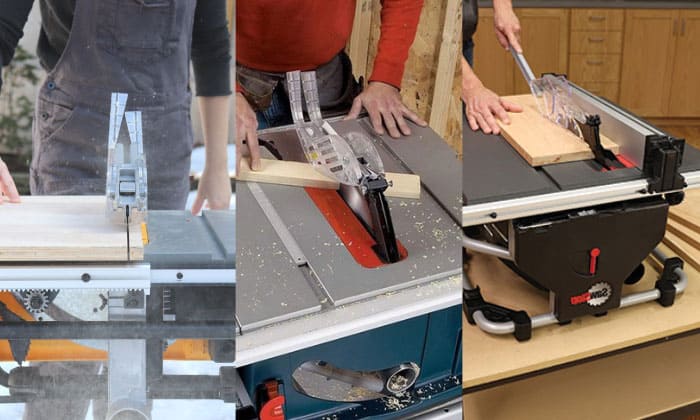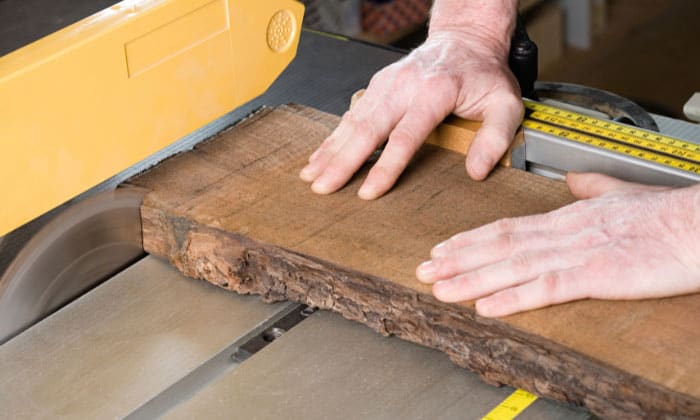Using a new table saw can be nerve-wracking, especially if you don’t know its amp draw. Now, you’re wondering how many amps does a table saw use.
Generally, table saws have an average amperage of 10 to 15 amps if they’re on a 120-volt circuit. But remember that the amount of power needed can depend on the nature of the work.
In this post, you’ll look through a comprehensive overview of a table saw’s energy requirements. Here, you’ll find various pieces of information, such as a table saw’s power needs, particularly as you dive deeper into its amp draw.
Table of Contents
- How Much Power Does a Table Saw Use?
- How to Calculate Power Needed for Table Saw?
- Types of Table Saws And Their Power Requirements
- Factors Affecting Table Saw Amperage
- Reasons Why My Table Saw Trips The Breaker
- How Do I Know My Circuit Panel Draw Enough Power to Run All Tools?
- Optimizing Table Saw Power Usage
- Frequently Asked Questions
- Conclusion
How Much Power Does a Table Saw Use?
Table saw power consumption depends on certain factors, including the tool’s type and performance capabilities. Oftentimes, standard table saws consume about 1,850 watts.
Note that this power consumption is similar across different standard table saws. For instance, a Dewalt table saw amp draw is 15 amps.
On the other hand, a miniature table saw may only use 746 watts. But the table saw wattage for a high-performance model, particularly those used for commercial purposes, might have a power consumption range of 3,500 to 5,000 watts.
Looking at a standard table saw’s power consumption, its amp draw is 15.41 amps if the tool is on a 120-volt connection. On the other hand, a 240v table saw amperage with the same wattage is only 7.71 amps.
You’ll learn how to calculate the power needed for a table saw.
How to Calculate Power Needed for Table Saw?
Use the following formula as your base to calculate table saw amps:
\[ \text{Amps} = \frac{\text{Watts}}{\text{Volts}} \]
So, if you look back at the previous example, the calculation should look like this:
\[ \text{Amps} = \frac{1,850 \text{ watts}}{120 \text{ volts}} = 15.41 \text{ amps} \]
You can also manipulate that formula to find the wattage or voltage of the power tool. But ensure that the other two values are present to find the other values.
Alternatively, you can look at a power tool amperage chart like the one below:
Note that this amp table isn’t the “end-all” information to follow when looking at power tool consumption. Nonetheless, it’s a good starting point to help point you in the right direction to search for the right tool to use.
Types of Table Saws And Their Power Requirements
Different table saws on the market can be placed into two main categories: Portable and Stationary.
For portable table saws, the models you’ll find are the following:
- Benchtop: Compact, light, and reasonably affordable. This kind of electrical table saw often uses 1,800 watts at 15.5 amps.
- Compact: It may have the same power requirements as a benchtop model, despite its smaller and lighter construction.
- Jobsite: Typically usable for commercial use, the job site table saw generally has the same power requirement as a benchtop unit.
As for stationary table saws, the following are the models you can find and use:
- Contractor: A large table saw typically featuring a belt drive and a large motor. But some models under this product category may only use 1,680 watts at a 14 amp capacity.
- Cabinet: Typically requires more to be plugged into a 220-volt outlet. But its large motor can eke out 3 to 5 horsepower for heavy-duty use.
- Hybrid: Captures the features of a cabinet saw but usually has a smaller motor and frame. Its more compact build also means that it’s often usable with a 110-volt service while providing ½ to 1-3/4 horsepower.
Factors Affecting Table Saw Amperage
Apart from a table saw’s voltage and wattage, other elements that can affect the tools amp rating are:
- Wire length and size
- Wire material
- Internal temperature changes
Reasons Why My Table Saw Trips The Breaker
Using a breaker that can’t handle the table saw’s amp draw can trip the circuit. Other reasons include the following:
- Worn motor brushes
- Defective motor overload switch
- Drive motor failure
- Incorrect extension cord used
- Binding the saw blade
How Do I Know My Circuit Panel Draw Enough Power to Run All Tools?
The typical steps to determine if your service panel has enough power to run various tools are the following:
- Search for your home or workplace’s circuit breaker panel
- Check the wiring diagram to find the breaker connected to a particular outlet
- After finding the breaker, multiply its amperage by 0.8
- Calculate the amp draw of your power tools
- Ensure that the amp draw of the tools doesn’t exceed the value in Step 3
Optimizing Table Saw Power Usage
First, ensure that you read and understand the various table saw facts mentioned in your product owner’s manual. For instance, if your product only works on a 15-amp circuit or higher, follow the manufacturer’s suggestions to prevent damaging the item.
Also, note that proper table saw usage can help ensure that you’re using the tool optimally. So, aside from reading the product’s user guide, here are other ways to use your table saw’s power usage efficiently and safely:
- Use the right blade. A combination or general-purpose blade should serve you well if you’re unsure about which blade to get.
- Control the cut with outfeed support. Without it, the table saw may kick back, which can also lead to cuts and other injuries.
- Maintain tabletop cleanliness. Vacuum the surface after every project to prevent dust buildup that might otherwise promote inefficiency.
- Align the blade. Prevent table saw hazards like cuts and inefficient power usage by ensuring the blade is level and aligned before each use.
Next, ensure that you’re cutting technique is systematic. Avoid making unnecessary movements while making the cut. Here are some steps to help you in this regard.
- Turn off and unplug the table saw from its power source
- Fit a rip blade into the blade arbor and ensure its level and alignment
- Release the lock lever and position the rip fence
- Restore the power to the table saw
- Place and align the material to cut onto the table
- Hold the material firmly and guide it along the rip fence slowly
Frequently Asked Questions
Is 15 Amp Breaker Enough For Table Saw?
A 15-amp circuit breaker should serve a table saw well. However, that power tool should have an actual amperage of 12 amps at most.
Can I Run A 15 Amp Table Saw On A 20 Amp Circuit?
Yes, you can use a 15-amp table saw on a 20-amp circuit. Note that the general rule of thumb for using electronic devices is that they should only be using up to 80% of the circuit breaker’s maximum amperage.
For example, a Dewalt table saw may have a 15-amp ampacity. If so, it’s safe to use on a 20-amp circuit since the connected breaker’s safety net should be at 18 amps.
What Are The Common Signs Of A Table Saw Drawing Too Many Amps?
Multiple signs exist when your table saw is drawing more amps than intended. Some examples include:
- The tool is hot to touch
- Frequent circuit breaker trips
- Lights in the room dim or turn off during table saw use
- Table saw is slow to start or stalls during use
- Burnt smell during use (typically caused by burnt or damaged wiring)
How To Choose The Right Table Saw (Based On Amperage)?
Generally, a table saw with a 15-amp draw should suffice. Avoid using a table saw that’s lower than 15 amps. Otherwise, you’ll find it more challenging than usual to cut different types of wood.
Do Power Tools Use A Lot Of Electricity?
Power tools can potentially use a significant amount of electricity. These items include (but aren’t limited to) air compressors, power saws, and electric welders.
Check the product’s owner’s manual to identify its energy usage before use. That way, you can avoid problems like circuit breaker trips and total device failure.
Conclusion
In conclusion, understanding how many amps does a table saw use is critical for optimal and safe power tool usage. Remember, table saws generally have an average amp draw of 10 to 15 amps.
If the required information isn’t readily available, you can calculate the amperage, wattage, or voltage using the appropriate formulas. But you should also consider important factors, such as the breaker’s maximum amperage, before use.

I am Edwin Jones, in charge of designing content for Galvinpower. I aspire to use my experiences in marketing to create reliable and necessary information to help our readers. It has been fun to work with Andrew and apply his incredible knowledge to our content.







